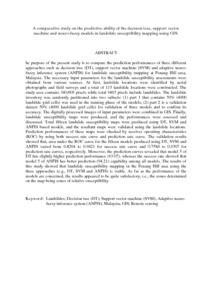Citation
Pradhan, Biswajeet and Ramli, Mohammad Firuz and Sulaiman, Wan Nor Azmin and Abd Manap, Mohamad and Surip, Noraini
(2013)
A knowledge-driven GIS modeling technique for groundwater potential mapping at the Upper Langat Basin, Malaysia.
Arabian Journal of Geosciences, 6 (May-13).
1621`1637.
ISSN 1866-7511
Abstract
The aim of this paper is to use a knowledge-driven expert-based geographical information system (GIS) model coupling with remote-sensing-derived parameters for groundwater potential mapping in an area of the Upper Langat Basin, Malaysia. In this study, nine groundwater storage controlling parameters that affect groundwater occurrences are derived from remotely sensed imagery, available maps, and associated databases. Those parameters are: lithology, slope, lineament, land use, soil, rainfall, drainage density, elevation, and geomorphology. Then the parameter layers were integrated and modeled using a knowledge-driven GIS of weighted linear combination. The weightage and score for each parameter and their classes are based on the Malaysian groundwater expert opinion survey. The predicted groundwater potential map was classified into four distinct zones based on the classification scheme designed by Department of Minerals and Geoscience Malaysia (JMG). The results showed that about 17% of the study area falls under low-potential zone, with 66% on moderate-potential zone, 15% with high-potential zone, and only 0.45% falls under very-high-potential zone. The results obtained in this study were validated with the groundwater borehole wells data compiled by the JMG and showed 76% of prediction accuracy. In addition statistical analysis indicated that hard rock dominant of the study area is controlled by secondary porosity such as distance from lineament and density of lineament. There are high correlations between area percentage of predicted groundwater potential zones and groundwater well yield. Results obtained from this study can be useful for future planning of groundwater exploration, planning and development by related agencies in Malaysia which provide a rapid method and reduce cost as well as less time consuming. The results may be also transferable to other areas of similar hydrological characteristics.
Download File
![[img]](http://psasir.upm.edu.my/28546/1.hassmallThumbnailVersion/A%20comparative%20study%20on%20the%20predictive%20ability%20of%20the%20decision%20tree.pdf)  Preview |
|
PDF (Abstract)
A comparative study on the predictive ability of the decision tree.pdf
Download (85kB)
| Preview
|
|
Additional Metadata
Actions (login required)
 |
View Item |

